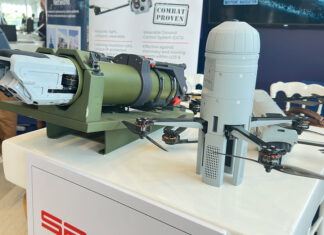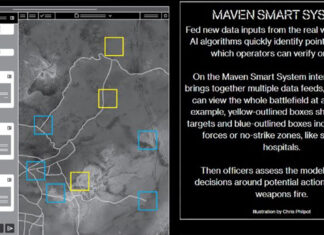Until recently the use of multiple sensors and weapons was limited to aerial and naval platforms, while land forces preferred the use of families of weapons, grouping different platforms carrying specific weapon systems to deliver a combined effect. This concept was favored to ensure the combined formation to endure the friction of combat and overmatch an adversary that would be less organized. The combination of the different components into a cohesive force required continuous training with complex and expensive systems that often left significant capability gaps uncovered.
Today, armored fighting vehicles mount a comprehensive suite of sensors and weapons, including direct fire weapons (gun and machine gun), guided weapons (ATGM, rockets), various countermeasures, and soon will be equipped with loitering munitions. Sensors onboard include various EO/IR, radar, and other electronic sensors that can spot electronic activity in their vicinity. With modern communications, the sensors and effectors can be connected to a combat cloud, to create a broader situational picture. Leveraging automated decision-making processes, these assets serve much larger formations in creating swift and decisive actions.
The miniaturization of sensors and weapons brings these capabilities to the individual soldier. Modern software-defined radios offering virtually unlimited bandwidth enable the warfighter to determine position, navigation, and timing without the support of GPS, this capability opens unprecedented joint fires capabilities to support the dismounted squad, far beyond the organic weapons that members carry with them.
Another important capability is the ability of weapon systems to automatically detect, track, and engage targets. Such a capability is gained by enabling weapon sights and seekers to detect objects in a scene, pointing the human operator to objects that are most likely targets. The systems track such objects and can also engage such targets, given certain parameters (such as self-defense) or human authorization.
For weapon systems using visual sensings, such as a tank gun, a guided missile, or loitering weapon, Artificial Intelligence (AI) based image processing provides a logical capability enhancement. With this capability, an AI process can assign a different color to each object detected in the scene. As such, an armed person, carrying an RPG will be classified as a high threat, while an unarmed person that looks like a civilian would be regarded as a ‘non-combatant’, thus enforcing certain rules to minimize collateral damage.
These assessments are dynamic and can change according to developments at the scene. Adding additional sensors that can classify targets and determine the risk each target poses, enabling the system to respond to dynamic situations using different rules.
These capabilities were at the epicenter of the Israel Defense Force’s (IDF) Carmel technology demonstration program, which paves the way for the modernization of main battle tanks, such as the next version of Merkava Mk 4, and Eitan armored personnel carrier. It drives the collective engagement capabilities empowered by the Fire Weaver AI-based battle management system, that dynamically and swiftly allocate fire support to every unit and team, directly responding to a call for fire utilizing an automated evaluation process.



















